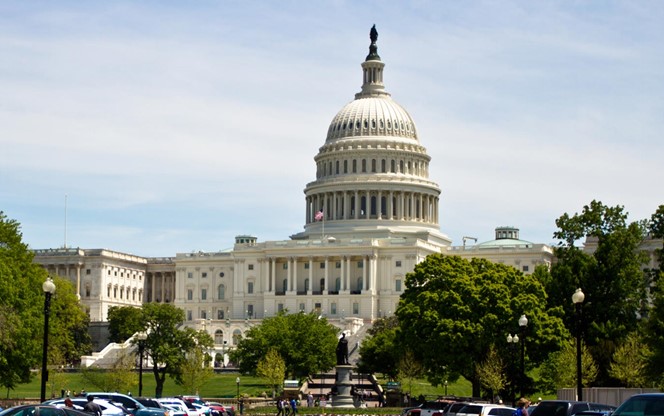

Articles | January 8, 2024
Our latest short quarterly insight on healthcare news for plan sponsors focuses on the evolving prescription drug pricing landscape.
It covers:
This issue of Trends also includes information about a recent court decision on counting coupons in Rx cost sharing and a reminder to download the latest version of our annual, handy guide to reporting and disclosure requirements.
Prescription drug cost can vary widely for the same medication. Consider the cost differences illustrated below for rosuvastatin (generic Crestor®), which is used to lower high cholesterol, and teriflunomide (generic Aubagio®), which treats multiple sclerosis. These drugs are among the top 25 generic medications by cost for clients in Segal’s SHAPE data warehouse.
1. As of December 13, 2023
2. As of December 7, 2023
3. For information about this amount, see "Variation in generic drug prices” below.
4. NADAC pricing effective August 23, 2023. Generic rosuvastatin first available in 2016, SHAPE median 30-day AWP $268.35 (range $5.25 to $268.36)
5. NADAC pricing effective September 20, 2023. Generic teriflunomide first available in 2023, SHAPE median 30-day AWP $9,751.55 (range $7,223.78 to $10,293.88)
Sources: Cost Plus Drugs, Costco, Medicaid.gov for National Average Drug Acquisition Cost and SHAPE, Segal’s health plan data warehouse
Prescription drug pricing, which is seen as a black box, is typically based on the average wholesale price (AWP) of a medication minus a discount promised by pharmacy benefit managers (PBMs). PBMs may increase discounts annually (e.g., 0.5 percentage points) throughout a contract term. However, the rise in AWP often outpaces discounts. Since 2000, 84.1 percent of AWP changes have resulted in a price increase with a median change of 5 percent. The NADAC, which a handful of PBMs have adopted as base pricing, is believed to be a closer approximation of actual retail pharmacy drug costs. Among generics alone, while AWP consistently grows, NADAC has been reported to decrease by as much as 44 percent over a five-year period.
As the call for clearer prescription drug pricing has grown, there could be significant shifts in the prescription drug landscape in the coming years, in part due to pharmacy disruption through business models, such as transparent PBMs and pharmacies.
One such disruptor is the Mark Cuban Cost Plus Drugs Company, which purports to deliver prescriptions at actual acquisition cost plus a 15 percent transparent markup and pharmacy labor and shipping fees (normally $5). Cost Plus Drugs has gained traction, with Blue Shield of California planning to leverage the company’s pricing beginning in 2025 as part of its “Pharmacy Care Reimagined” initiative.
Large players are taking note, with both Express Scripts and retail giant CVS announcing their own simpler “cost plus” approaches. However, simple and transparent may not equate to savings and plan sponsors should carefully evaluate all PBM offerings. Unlike Cost Plus Drugs, which reports National Drug Code (NDC)-level acquisition costs, Express Scripts and CVS pricing is less clear. Express Scripts uses the lower of three acquisition cost proxy benchmarks, while CVS stated they will use “a transparent formula built on the cost of the drug, a set markup, and a fee” but has not specified on what the “cost” will be based.
Basing generic drug costs on AWP can lead to variability and make it difficult for plan sponsors to understand how much, if any, discounts result in savings. For both medications shown in the graph above, AWP varies wildly depending on NDC partly due to the many sources and suppliers. Often, the list price has nearly no relationship to the actual production costs incurred by drug manufacturers.
Rosuvastatin plan sponsor experience ($8.49) is closer to NADAC pricing than median AWP ($268.35). Costco is about three times higher than the SHAPE median, whereas Cost Plus Drugs offers the medication a few dollars above NADAC pricing.
Conversely, teriflunomide highlights an issue with newer generics, which may not produce cost savings. Many new generics are excluded from discounts for a period (e.g., six months) depending on contract terms. The median cost in SHAPE has decreased since March 2023 from $5,852.04 to $3,362.93 in September 2023, roughly a third of the median AWP ($9,751.55), but both Costco and Cost Plus Drugs offer the medication for significantly less and even undercut NADAC pricing, which points to savings with greater purchasing power.
While AWP discounts are typically applied across all eligible medications, the per-drug discounts can be vastly different — 96.8 percent for rosuvastatin and 56.1 percent for teriflunomide — which is why many are pushing for a clearer pricing structure.
Concerns have arisen around manufacturers potentially raising costs for non-Medicare plans to recoup lost revenue from IRA price negotiations. It’s too soon to tell if that will be the case, but there are several situations that could result in increased or decreased costs for plan sponsors in addition to potential price shifting. Generic and biosimilar manufacturers perform years of research to determine which drugs or biologics to develop. If their predicted margins are reduced due to lower brand/reference drug costs, competition could be reduced, leading to higher sustained brand cost and use. Conversely, several of the initial medications have or will have patents expiring by 2026, leading to the release of the cheaper generic or biosimilar alternatives already in development.
As negotiated prices are finalized and become publicly reported, manufacturers and PBMs will need to justify the higher costs that plan sponsors experience for these medications. Medicare pricing has often been used as a benchmark for the commercial sector and Medicare penalties have also been reported to result in savings for employer-sponsored plans.
Prescription drug manufacturers often provide coupons to patients to help with the cost of a drug at the pharmacy, particularly for high-cost brand name or specialty drugs. Group health plans currently have the option to either count or exclude the value of these coupons when determining a participant’s maximum out-of-pocket amount. A recent court decision calls into question whether this option is permissible. While plan sponsors are not required to take immediate action in response to this rule, they should examine their current coupon program to determine how they could be affected. Read more in our October 26, 2023 insight.
Get our handy reference, the 2024 Reporting and Disclosure Guide for Benefit Plans.
Contact your Segal consultant or get in touch with us.

Health, Compliance, Multiemployer Plans, Public Sector, Healthcare Industry, Higher Education, Architecture Engineering & Construction, Corporate, Mental Health

Higher Education, Benefits Administration, Health, Healthcare Industry

Health, Benefits Administration, Pharmaceutical, Technology
This page is for informational purposes only and does not constitute legal, tax or investment advice. You are encouraged to discuss the issues raised here with your legal, tax and other advisors before determining how the issues apply to your specific situations.
© 2024 by The Segal Group, Inc.Terms & Conditions Privacy Policy California Residents Sitemap Disclosure of Compensation Required Notices
We use cookies to collect information about how you use segalco.com.
We use this information to make the website work as well as possible and improve our offering to you.